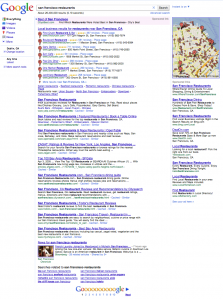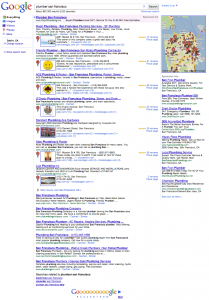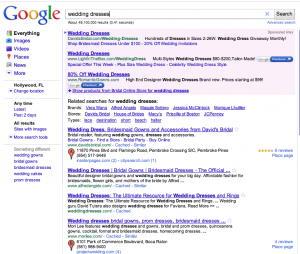Meet the New Google Local SERPs
Tweet Thought it might be of interest to catalogue the different types of Google Local SERPs I am seeing:
7 Pack Lite
Standard 7 Pack listings with map in right column above ads. 10 Web results below.
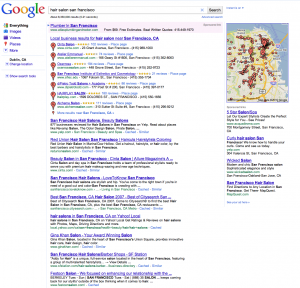
UPDATE: 3 Pack Lite
Standard 3 Pack listings with map in right column above ads. 7 Web results below.
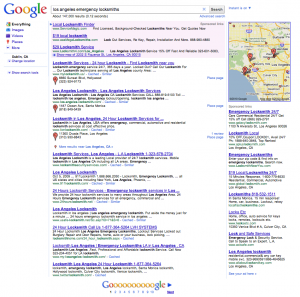
7 Pack Lite w/Links
Same as 7 Pack Lite with category and location tag links at the bottom of the Pack.
7 Pack Sandwich
1-3 Web results followed by a 7 Local Listings with Map on the right column. 2 Web results at the bottom.
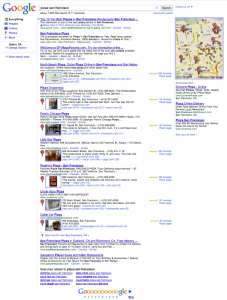
Death To Directories
First 7 results are Place Page listings. Map on right column. 6 Web results at the bottom.
UPDATE: Organic Split Pack
7 Pack Lite with A listing at the top followed by two Web results followed by a 6 Pack. 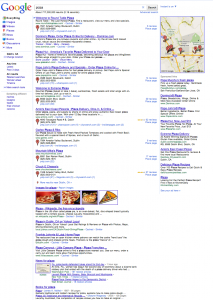
UPDATE: The Places Split Pack
Two Place Listings separated by Web results.
I’ll keep hunting for more. Tweet
